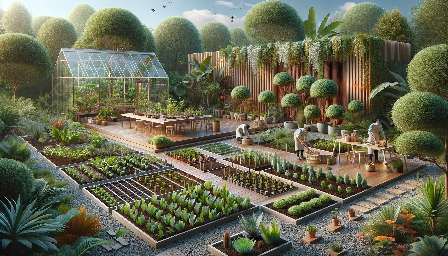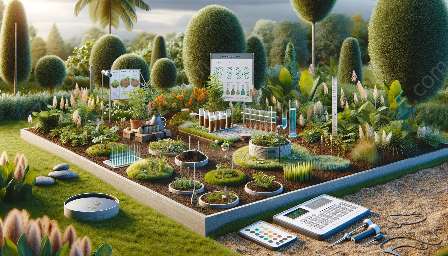Greenhouse management is an essential part of both horticulture and agriculture & forestry, involving the careful control of environmental factors to optimize plant growth and productivity. In this comprehensive guide, we will explore the key aspects of greenhouse management, its compatibility with horticulture, agriculture, and forestry, and the best practices, technologies, and strategies for successful greenhouse operations.
The Importance of Greenhouse Management
Greenhouses play a crucial role in modern horticulture and agriculture by providing a controlled environment for plant growth. By managing various factors such as temperature, humidity, light, and ventilation, greenhouse operators can create an optimal growing environment for a wide range of crops, flowers, and ornamental plants.
Moreover, with the increasing demand for sustainable agricultural practices, greenhouses offer the opportunity to cultivate crops in a more resource-efficient manner, reducing water consumption and minimizing the use of chemical pesticides.
Climate control: One of the key aspects of greenhouse management is the control of temperature, humidity, and light levels to create an ideal growing environment. This is often achieved through the use of heating, cooling, and shading systems, as well as automated climate control technologies.
Irrigation and fertilization: Efficient water management and fertilization strategies are essential for maximizing plant growth and health in greenhouses. Drip irrigation, fertigation systems, and water recycling technologies are commonly used to deliver nutrients and water to plants while minimizing waste.
Pest and disease management: Greenhouses require vigilant pest and disease management to protect crops from potential threats. Integrated pest management (IPM) practices, biological control agents, and monitoring systems are employed to minimize the use of chemical pesticides while ensuring plant health.
Technological Advancements in Greenhouse Management
Modern greenhouse operations benefit from a wide range of technological advancements that enhance efficiency, productivity, and sustainability.
Automation and remote monitoring: Automated climate control, irrigation, and fertilization systems enable precise management of greenhouse environments, while remote monitoring technologies allow operators to track conditions and receive alerts in real time.
Energy-efficient solutions: To reduce energy consumption, greenhouse managers can integrate energy-efficient heating, cooling, and lighting technologies, as well as renewable energy sources such as solar panels and geothermal heating.
Controlled environment agriculture (CEA): CEA techniques such as hydroponics, aquaponics, and vertical farming are increasingly being used in conjunction with greenhouse management to further optimize resource utilization and crop production.
Best Practices for Sustainable Greenhouse Management
Implementing sustainable practices in greenhouse management is essential for reducing environmental impact and ensuring long-term viability.
Water and energy conservation: Utilizing water-efficient irrigation systems, energy-saving technologies, and renewable energy sources helps minimize the ecological footprint of greenhouse operations.
Waste reduction and recycling: Recycling organic waste, implementing composting programs, and adopting sustainable packaging solutions contribute to the overall sustainability of greenhouse management.
Biodiversity and ecosystem support: Creating habitats for beneficial insects, incorporating native plant species, and practicing responsible land stewardship promote biodiversity and ecological balance within and around greenhouse facilities.
Integration of Greenhouse Management in Horticulture and Agriculture & Forestry
Greenhouse management is closely intertwined with both horticulture and agriculture & forestry, providing innovative solutions to enhance plant cultivation and resource efficiency.
In horticulture, greenhouses offer a controlled environment for the propagation, cultivation, and experimentation of various plant species, including ornamental plants, vegetables, and fruit crops. Greenhouse management practices play a crucial role in achieving optimal growth conditions and crop quality.
As for agriculture & forestry, greenhouses enable the cultivation of crops in regions with challenging environmental conditions or limited arable land. By incorporating advanced management techniques, including precision agriculture and sustainable practices, greenhouses contribute to the diversification and sustainability of agricultural production.
In Conclusion
Greenhouse management is an integral part of horticulture, agriculture, and forestry, offering versatile solutions for sustainable plant cultivation and resource-efficient production. By embracing the best practices, technologies, and strategies outlined in this guide, greenhouse operators can optimize productivity, minimize environmental impact, and contribute to the advancement of modern agricultural and horticultural practices.



